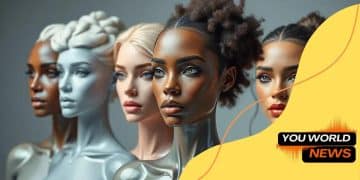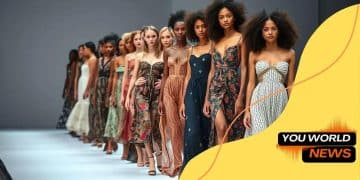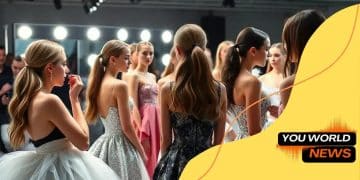The impact of body positivity movements on modeling
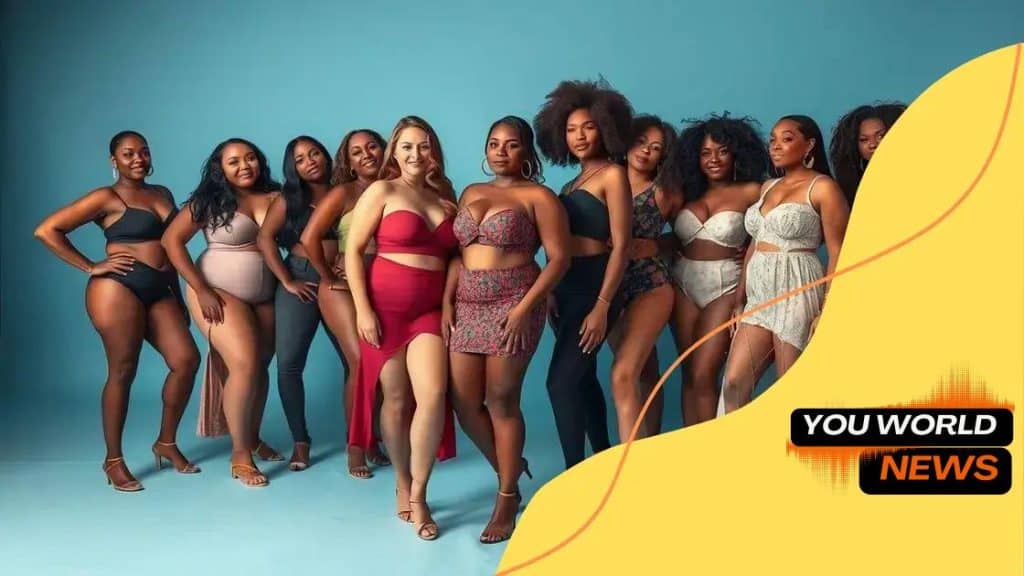
The impact of body positivity movements on modeling has led to increased inclusivity, with agencies embracing diverse body types and promoting authenticity in campaigns to reflect modern beauty standards.
The impact of body positivity movements on modeling is undeniable. These movements aren’t just changing the runway; they’re influencing how society views beauty. So, how are these shifts affecting models and the industry as a whole?
Understanding body positivity movements
Understanding body positivity movements is vital in today’s society. These movements focus on accepting and loving all body types, challenging traditional beauty standards. More than just a trend, they aim to create a culture that celebrates diversity in appearance.
The Origins of Body Positivity
The body positivity movement began in the late 1960s, initially driven by a desire for fat acceptance. It has since evolved into a broader movement that promotes self-love and diversity. Media representation has played a significant role in this evolution, leading to a more inclusive understanding of beauty.
Key Principles of Body Positivity
At its core, body positivity emphasizes several principles:
- Acceptance of all body types
- Challenging unrealistic beauty standards
- Fostering mental health and self-esteem
- Promoting inclusivity in fashion and media
These principles encourage individuals to appreciate their bodies for what they are, rather than conforming to external pressures. Many advocates utilize social media to spread these messages, creating communities that empower individuals to share their experiences and support one another.
The Importance of Representation
Representation in media and fashion is crucial for the body positivity movement. When diverse body types appear in advertisements and on runways, it sends a powerful message that beauty comes in many forms. This visibility not only boosts the confidence of individuals who see themselves represented but also challenges societal norms and expectations.
Furthermore, increased representation can lead to significant changes in how brands market their products. More companies are now collaborating with models of various sizes, reflecting a shift towards inclusivity that resonates with a broader audience.
Challenges Ahead
Despite its progress, the body positivity movement faces challenges. Societal pressures still influence individuals, and the fear of judgment can deter many from embracing body positivity. There are ongoing debates about the role of health in body positivity, as some people argue that the movement can overlook important health considerations.
Nevertheless, the core message remains clear: being comfortable in one’s skin is essential. By continuing the dialogue around body positivity, we can foster a more accepting and understanding society.
Historical context of modeling standards
Understanding the historical context of modeling standards helps us see how beauty and body images have changed over time. The fashion industry has long set specific ideals that define beauty, which can shift with cultural changes.
In the early 20th century, models showcased very different body types than those seen today. Back then, a healthier, more voluptuous figure was often celebrated. However, by the 1960s, the advent of supermodels changed perceptions and introduced a slimmer ideal that many aspired to attain.
Key Shifts in Modeling Standards
Several important shifts have shaped modern modeling standards:
- The emergence of the “heroin chic” look in the 1990s
- The impact of major fashion shows and their influence on public perception
- The rise of social media and its democratization of beauty standards
Each of these shifts not only impacted how models were perceived but also affected how the general public viewed their own beauty. Many people began to aspire to the looks seen in fashion magazines, often leading to detrimental effects on self-esteem and body image.
The Role of Cultural Changes
As our society becomes increasingly aware of diverse body types, the meaning of beauty continues to evolve. Movements advocating for body positivity are now challenging traditional standards. Today, a wider variety of body shapes and sizes are gaining visibility in the modeling industry.
These movements encourage acceptance, and models of different shapes are now celebrated on runways and in advertisements. This shift creates a more inclusive environment that fosters self-acceptance and appreciation for all bodies.
Industry leaders who embrace inclusivity are helping to reshape what beauty means, moving away from unattainable ideals. This transition reflects a growing recognition of individuality and the importance of representing diverse bodies.
Key figures in body positivity
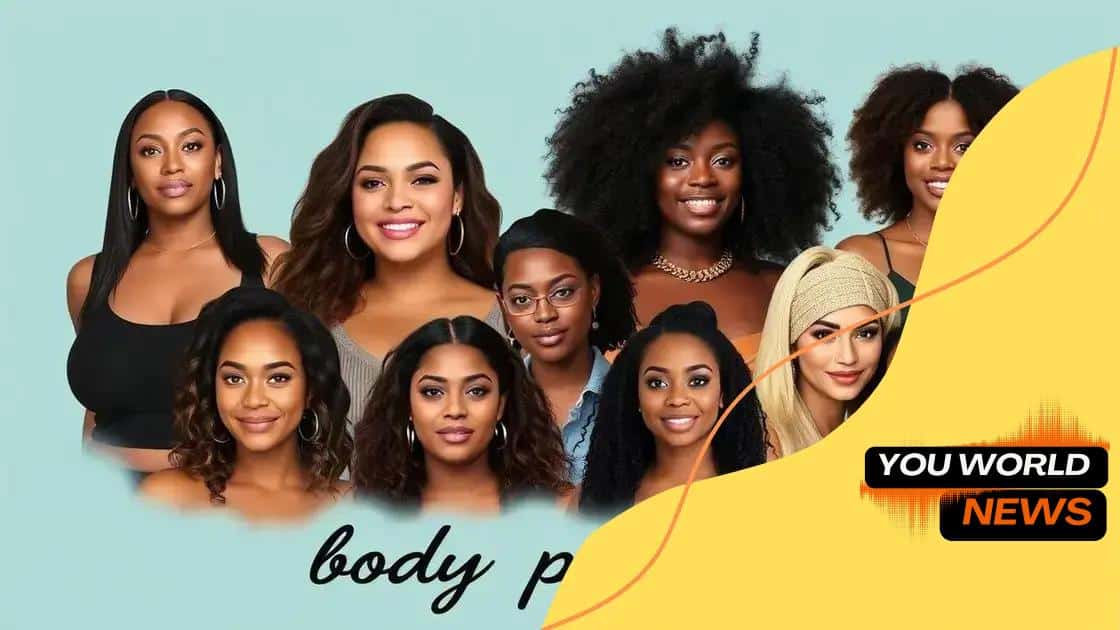
There are several key figures in the body positivity movement who have significantly influenced its growth and reach. These individuals have challenged traditional beauty standards and advocated for greater acceptance of all body types.
One prominent figure is Ashley Graham, a model known for her work in promoting body positivity. She has spoken openly about her journey in the modeling industry and how society’s expectations can be unrealistic. Her advocacy encourages individuals to embrace their bodies, regardless of size.
Influential Activists
Other influential activists include:
- Jameela Jamil – An actress and advocate for body acceptance, she uses her platform to discuss mental health and body image.
- Whitney Thore – Known for her show “My Big Fat Fabulous Life,” she promotes a message of self-love while challenging stereotypes.
- Dove – While not a single person, Dove’s campaigns have played a critical role in promoting body positivity through advertisements that showcase diverse body types.
These figures have made significant contributions to the body positivity movement. They help people feel less alone in their struggles with body image and encourage others to celebrate their uniqueness.
Movement Impact
Each of these advocates not only represents body positivity but also highlights the importance of representation in media. Their messages have inspired many to rethink their perceptions of beauty and self-worth. By using their voices and platforms, they are changing the narrative around body shapes and sizes.
Social media has amplified their messages, allowing them to reach vast audiences. With every post and campaign, a greater awareness of body positivity is being cultivated, making it easier for people to embrace themselves and others in their authenticity.
Impact on modeling agencies
The impact on modeling agencies due to the rise of body positivity movements has been significant. As society shifts toward embracing all body types, agencies are changing how they operate and represent beauty.
Many modeling agencies are now realizing the importance of diversity in their portfolios. This means hiring models of various sizes, ethnicities, and backgrounds. By doing this, they not only reflect the reality of consumer demographics but also connect better with a wider audience.
Changes in Hiring Practices
Agencies are adopting new hiring practices to promote inclusivity:
- Recruiting plus-size models regularly
- Collaborating with models from different cultural backgrounds
- Offering platforms for models of all ages
This change allows agencies to showcase a broader spectrum of beauty, which can resonate with consumers seeking representation. Representation matters, and it can build a stronger brand loyalty and improve sales for clients.
Effects on Campaigns and Branding
As body positivity becomes a priority, modeling agencies adapt their campaigns to reflect this shift. Advertisements now feature models of various body types, backgrounds, and ages. This not only meets public demand but also opens new markets for brands.
Brands and agencies find that campaigns promoting body positivity lead to higher engagement levels. Consumers often feel more connected to brands that celebrate diversity, creating a positive cycle of support and revenue.
Additionally, modeling agencies are increasingly involved in social media campaigns. They utilize platforms to showcase diverse talent, which further emphasizes their commitment to body positivity. Through these initiatives, brands can expand their reach and make a meaningful impact in the industry.
Future trends in body image representation
Exploring the future trends in body image representation reveals exciting changes in how we view beauty and diversity in fashion. As the conversation around body positivity grows, the fashion industry is responding with more inclusive practices.
One key trend is the shift toward digital and virtual representation. With technology advancing, brands are using virtual models that reflect diverse body types. This allows for creative flexibility and shows that beauty can be found in every shape and size.
Increased Inclusivity in Campaigns
Expect to see more brands embracing a wider range of models in their advertisements. This means:
- Featuring models of various sizes and shapes
- Highlighting diverse ethnicities and ages
- Incorporating gender-neutral models
This move not only promotes body positivity but also enhances customer connection. When consumers see themselves represented, they are more likely to engage with the brand.
Emphasis on Authenticity
Authenticity is becoming crucial in marketing strategies. Brands are increasingly leaning towards real stories and experiences shared by models to build trust. This authenticity resonates well with audiences, creating a deeper emotional connection.
Sustainability is also a vital trend. Consumers are more aware of environmental issues, leading brands to adopt sustainable practices. This includes creating clothing for all body types while ensuring that production methods are eco-friendly.
Furthermore, social media platforms play a pivotal role in shaping body image representation. Influencers and content creators are challenging outdated beauty standards, showcasing relatable and diverse beauty. This empowers individuals to express themselves, ultimately contributing to a healthier view of body image.
The body positivity movement has significantly transformed how we view beauty in modeling and beyond. It promotes acceptance of all body types, encouraging individuals to love themselves without adhering to unrealistic standards. As the industry continues to embrace diversity, future trends look promising, focusing on authenticity, inclusivity, and representation. With key figures and changing practices in modeling agencies, the message of body positivity is spreading and affecting society positively.
FAQ – Frequently Asked Questions about Body Positivity in Modeling
What is body positivity?
Body positivity is a social movement that encourages individuals to accept and love their bodies, regardless of size, shape, or appearance.
How has the body positivity movement impacted modeling agencies?
The movement has led modeling agencies to embrace inclusivity by representing diverse body types and promoting models of various shapes and backgrounds.
What trends can we expect in future body image representation?
Future trends include an emphasis on digital models, authenticity in marketing, and greater representation of all body types in fashion campaigns.
Why is representation important in media?
Representation is vital as it fosters self-acceptance and provides relatable role models for individuals, encouraging a healthier view of body image.


